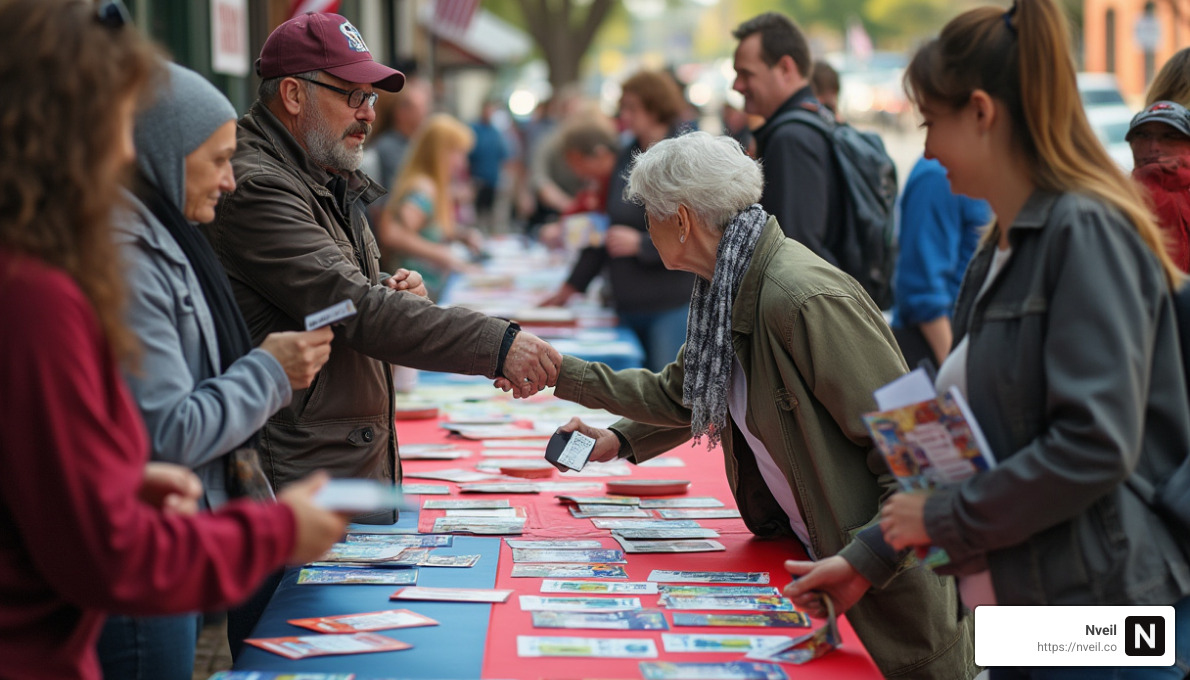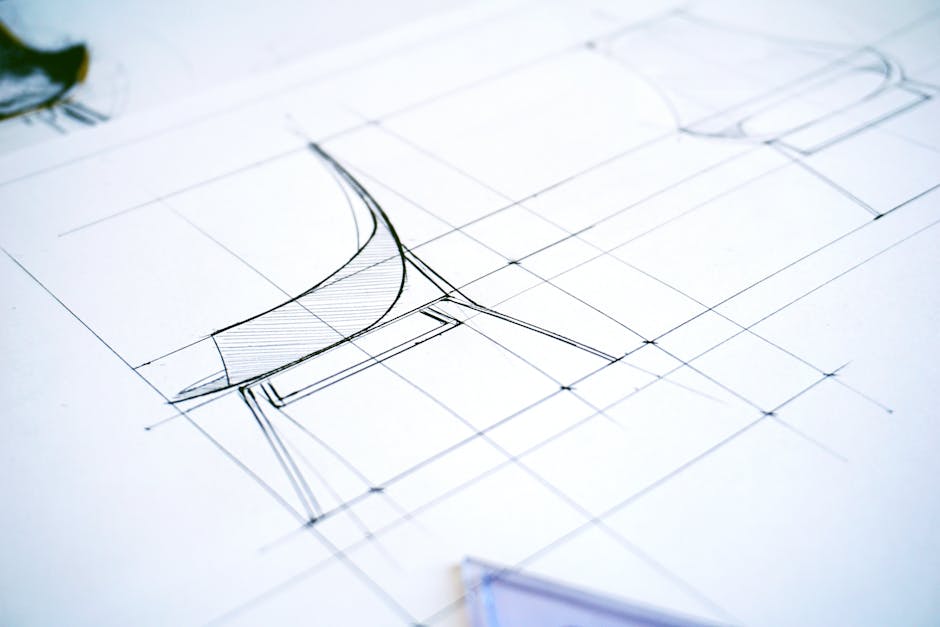1. Introduction
In today’s digital-first world, small to medium-sized businesses (SMBs) face the same online pressures as large corporations. Customers expect visually compelling websites, user-friendly interfaces, and consistent branding across all touchpoints. While the demands on design have skyrocketed, many SMBs find themselves at a crossroads—knowing they need expert help but unsure how to choose the best design agency for their specific goals, budget, and brand identity.
This confusion is understandable. The marketplace teems with freelance designers, full-service agencies, and specialized studios—all claiming they can elevate your business to new heights. But how do you separate genuine expertise from clever buzzwords? How do you ensure the agency you pick can handle not just design but also marketing, development, and even selling websites ready-made for SMB needs?
This guide will walk you through:
• Why design agencies matter for SMB growth
• Key criteria to evaluate agencies (portfolio, SEO-savviness, cultural fit, etc.)
• How decisions align with client awareness levels from top to bottom of the marketing funnel
• Practical steps to find, vet, and finalize a contract with a design agency that truly meets your needs
If you want to stay competitive and relevant in a hyper-saturated market, leveraging the right design agency can catapult your SMB’s online presence—reinforcing your brand, optimizing user experience, and ultimately driving more leads and sales. Let’s dive in!
2. Why a Design Agency Matters: Solving Key SMB Challenges
2.1 Standing Out in a Crowded Market
With thousands of new websites launching daily, a generic template or DIY design no longer cuts it. Differentiation is crucial to capturing the attention of potential customers or clients. A top-notch agency provides strategic insight into your brand persona, ensuring your visuals and site architecture create an immediate sense of trust and uniqueness.
2.2 Integrated Marketing, Branding, and Development
Today’s digital marketing landscape blends branding, design, search engine optimization (SEO), and conversion optimization too tightly to isolate. A high-caliber design agency often offers or coordinates:
• Branding: From logo creation to style guidelines
• Marketing: Campaigns, social media creatives, lead generation funnels
• Development: Building secure, user-friendly websites that scale
This holistic approach ensures each digital asset resonates with your brand’s ethos, targeting consistent user engagement and measurable ROI.
2.3 Future-Proofing Your Website
A well-chosen agency thinks beyond aesthetics, ensuring your site remains adaptable in a rapidly evolving tech environment. This includes:
• Mobile-responsiveness: Over half of all web traffic is mobile
• Scalable architecture: Room for expanding features or products
• SEO compliance: Aligning with the latest search engine algorithm updates (Google, Bing, Yahoo, Yandex)
• Conversion funnels: Streamlined checkouts or lead capture forms
2.4 Saving Time and Resources
Instead of piecemealing freelancers for branding, development, and marketing, a full-service design agency can save you from inconsistent messaging, aesthetic mismatches, and wasted budgeting. Their comprehensive viewpoint means your website layout, marketing copy, and brand presence feel unified and intentional.
3. Defining Your Needs: Branding, Marketing, Development, or All of the Above?
Before you compare agencies, clarify what you actually require. It depends on your stage of business maturity and how aware you are of potential design pitfalls.
• Pure Branding: Logo, color palette, typography, brand tone
• Website Overhaul: Complete redesign of an existing site or build from scratch
• Holistic Marketing: Funnels, social media visuals, email campaigns
• Technical Development: Complex integrations (CRM, e-commerce, memberships)
• Ongoing Support: After-launch maintenance, iterative improvements, SEO updates
If you’re unsure, a reliable agency can assess your digital footprint, clarifying both immediate fixes and future expansions.
4. Essential Criteria for Evaluating Design Agencies
4.1 Portfolio and Industry Experience
Start by reviewing their portfolio. Focus on:
• Visual Diversity: Do their projects vary stylistically or all look the same?
• Industry Relevance: Experience with businesses of your size or in a similar niche?
• UX Depth: Are live examples fast, mobile-optimized, and intuitive?
Case studies or client references can show how agencies measure their own success—e.g., increased user engagement, higher conversions, stronger brand recall.
4.2 Range of Services: From Branding to Ready-Made Websites
In 2025, a great agency does more than produce design mockups. Many excel in or coordinate:
• Branding: Story, tone, visual elements
• Development: Ensuring technical stability, mobile responsiveness, secure hosting
• SEO & Conversion Optimization: Leveraging both high-competition (“web design agency”) and moderate-competition (“ready-made websites for small businesses”) keywords
• Marketing: Comprehensive campaigns, content creation, and funnel design
Most SMBs lack bandwidth to manage multiple providers. A one-stop shop ensures brand coherence and saves you from juggling various vendors.
4.3 Technical Skills: SEO, Mobile-Responsiveness, and Beyond
If an agency overlooks SEO or designs sites that aren’t mobile-optimized, your online visibility suffers. Confirm they:
• Implement SEO fundamentals: Titles, meta descriptions, alt tags, sitemaps, internal linking
• Prioritize performance: Use caching, image compression, code minification
• Plan for future expansions: Adding new features shouldn’t require a total rebuild
Pro Tip: Inquire whether they conduct an SEO audit or include foundational optimization in each project. It’s crucial for long-term ranking success.
4.4 Pricing Models and Budget Alignment
Agencies commonly use hourly rates, flat fees, or retainers. Consider:
• Your Budget: A minor site refresh vs. a complete rebrand plus e-commerce might demand different cost structures
• Value vs. Cost: Cheaper agencies can mean generic or outdated designs; top-tier might over-deliver on things you don’t need
• Transparent Quotes: Ensure line items for design, development, revisions, and maintenance
Be wary of hidden fees for post-launch edits. Clarify if updates are covered or charged additionally.
4.5 Communication and Collaboration Styles
Collaborative design is key. Potential red flags include:
• Slow response times: If they ignore your initial inquiries or take ages to reply, expect issues later.
• Project management: Agencies that use Asana, Trello, or Basecamp can streamline tasks and deadlines.
• Cultural fit: Especially for mission-driven SMBs (eco-friendly, social causes), aligning values can create deeper synergy.
Pro Tip: Look for agencies that treat your feedback as essential dialogue—mutual respect fosters great outcomes.
5. How to Shortlist Potential Agencies
5.1 Conducting Initial Research (TOFU & Problem-Aware)
At the top of the funnel, you may only sense your website or brand identity is underperforming. Start by:
• Googling relevant terms (“best web design agency,” “branding for small businesses”)
• Reviewing directories: Sites like Clutch, UpCity, DesignRush with verified reviews
• Seeking referrals from peers in your industry
At this stage, gather a wide list of potential partners—even if you’re not sure which exact services you’ll need.
5.2 The RFP (Request for Proposal) Approach
For structured engagements, an RFP can help standardize agency responses:
• Summarize Project: Goals, timelines, brand background, deliverables
• Ask for Details: Their design methodology, approach to SEO, post-launch support
• Compare: Ensure you’re reviewing proposals on similar scopes so you can evaluate fairly
Pro Tip: Keep RFPs concise; serious agencies spot committed clients from generic queries.
5.3 In-Depth Interviews and Discovery Calls
With a narrower list, schedule calls to gauge intangible factors:
• Chemistry: Do they listen, offer tailored insights?
• Expertise: Ask scenario-based questions. Can they detail a past project’s ROI or approach to a similar challenge?
• Strategic Vision: A skilled agency provides proactive suggestions or warnings.
SEO Note: Clarify if the agency’s approach to content structure, meta tags, or link building aligns with both high-competition (“SEO services,” “web design agency”) and moderate-competition (“ready-made websites for small businesses,” “branding for small businesses”) keywords.
6. The Role of Branding and Marketing in Agency Selection
A design agency is more than just a set of creative skills—it’s ideally a marketing-savvy partner weaving your brand story into every digital element.
Cohesive Identity: Marketing campaigns (email blasts, social ads) should mirror your site’s color schemes, typography, and brand messaging.
Customer Journey: A brand-driven approach resonates from the first click on an ad to final checkout.
Long-Term Relationships: Agencies adept at marketing often provide ongoing optimization, supporting post-launch growth.
If brand identity is weak, even the slickest website won’t convert effectively. Seek agencies that champion brand-centric designs, ensuring a cohesive user experience.
7. Common Pitfalls When Hiring a Design Agency
Overemphasizing Price
Cheapest doesn’t always mean best; you risk generic work or rework costs.
Solution: Look at ROI, not just upfront price.
Ignoring Cultural Fit
If your agency doesn’t understand your mission or values, the end product might clash with your brand essence.
Solution: Evaluate synergy in the discovery phase.
Skipping SEO Checks
Beautiful websites that lack SEO best practices never see traffic.
Solution: Ensure SEO fundamentals are part of the initial project scope.
Lack of Post-Launch Support
Who’ll maintain or update your site after it goes live?
Solution: Clarify support or retainer packages during negotiations.
8. Aligning with the Client Awareness Funnel
Choosing an agency also depends on recognizing your own stage in the client awareness funnel about your design/branding challenges:
Unaware & Problem-Aware (Top of Funnel – TOFU)
• State: You suspect your website is outdated but aren’t sure how severe the issue is.
• Action: Read general educational articles like “Why Branding Matters.”
• Agency Role: Provide free audits or initial consults to highlight potential improvements.
Solution-Aware (Middle of Funnel – MOFU)
• State: You know your site needs rebranding or better UX but haven’t picked a partner.
• Action: Compare agencies, review case studies, read moderate-competition keywords like “affordable website solutions.”
• Agency Role: Offer thorough proposals, references, or success metrics.
Product-Aware & Most Aware (Bottom of Funnel – BOFU)
• State: You’re down to a shortlist, verifying costs, timelines, final details.
• Action: Engage in final negotiations, request trials or demos if relevant.
• Agency Role: Address last-minute objections, finalize contracts, provide a clear CTA for sign-off.
9. Case Study: How One SMB Found Its Perfect Design Agency Match
Scenario: A local boutique clothing brand, “UrbanFlow,” sensed it had outgrown its DIY WordPress site. Offline sales were fine, but online leads lagged. The site felt slow, with mismatched branding and minimal SEO strategy.
Steps Taken
• Self-Audit: Realized their brand story wasn’t reflected—colors clashed, images were inconsistent, and load times were poor.
• Research & RFP: Googled “branding for small businesses” to find top agencies. Sent an RFP outlining their goals for a sleek e-commerce store.
• Shortlist & Interviews: Interviewed three agencies for synergy, SEO expertise, and creative alignment.
• Choosing an Agency: They selected Nveil, known for design, marketing, development, and proven e-commerce track records.
• Implementation: Refreshed brand palette, professional photography, custom Shopify-based site with advanced SEO layering.
Results
• Brand Consistency: Unified color themes, refined imagery, and cohesive microcopy.
• 30% Boost in Online Sales in two months, thanks to optimized product categories for moderate-competition terms like “urban boutique fashion.”
• Media Coverage: Local lifestyle editors started featuring their brand revamp story.
• Ongoing Partnership: Nveil continues to help with seasonal collections and marketing pushes.
Key Takeaway: Diligent agency selection, guided by brand and SEO needs, propelled UrbanFlow from a mediocre online presence to a thriving digital store.
10. High-Traffic vs. Moderate-Competition Keywords for Choosing a Design Agency
When SMBs search for design services or brand consultations, consider how SEO keywords function in attracting leads:
High-Competition Keywords
• Web design agency
• SEO services
• Digital marketing company
• Responsive design
Moderate-Competition Keywords
• Ready-made websites for small businesses
• Branding for small businesses
• Affordable website solutions
• Local SEO strategies
Mixing both gives broad visibility. Optimizing your brand around moderate-competition terms is often a quicker win, while long-term efforts tackle high-volume, high-competition terms.
11. Step-by-Step Guide: Finalizing Your Agency Selection
A structured approach can demystify the final decision:
• Clarify Goals: Do you need a full rebrand, a site overhaul, or incremental enhancements?
• Research & Shortlist: Gather 5–7 potential agencies via directories, recommendations, or online searches.
• Initial Contact: Observe response times, their eagerness to understand your brand, and their style of communication.
• Discovery Calls: Delve into brand background, timeline, and expectations for ROI or conversions.
• Request Proposals: Compare scopes, itemized costs, and references from each finalist.
• Check References: Contact 1–2 past clients to validate performance claims.
• Negotiate Contracts: Clarify deliverables, post-launch support, revision rounds, and cancellation terms.
• Kick-Off Meeting: Align brand guidelines, workflow tools, and project milestones once you select your agency.
Pro Tip: Stay open to the agency’s strategic suggestions—you may discover new marketing or branding opportunities you didn’t anticipate.
12. Conclusion
Choosing the best design agency for your SMB can feel daunting, but it’s a game-changer once you find the right fit. By identifying your key needs—be that brand identity, website design, SEO, or holistic marketing—and using clear selection criteria, you can confidently decide which partner aligns with your goals and vision.
In an increasingly saturated digital arena, a well-chosen agency elevates you above the noise. They don’t just produce attractive designs; they craft strategic solutions that unify your brand, streamline development processes, and ensure top search rankings for both high-competition and moderate-competition keywords. Through deliberate research, honest communication, and a focus on cultural and strategic fit, your SMB can form an alliance that drives growth and genuine brand differentiation.
Remember to factor in the client awareness funnel as you talk with prospective agencies—seek experts who cater to each stage, from Unaware users to Most Aware buyers. By weaving your brand values into every design choice and user interaction, you’ll build an online presence that stands out, captivates, and converts in today’s rapidly evolving digital marketplace.



